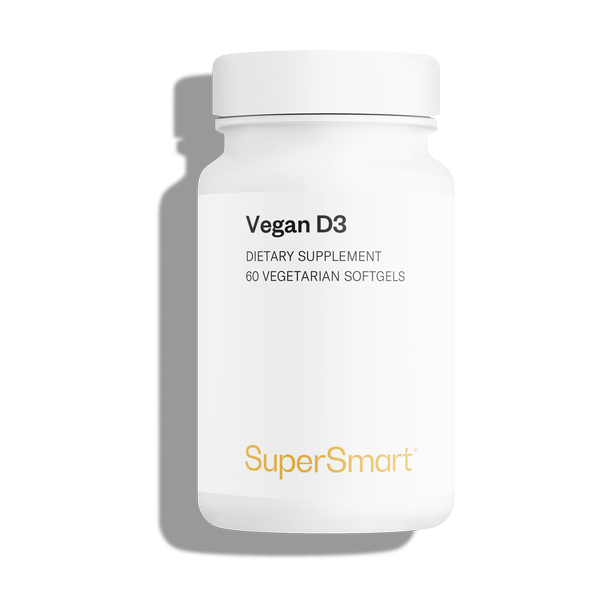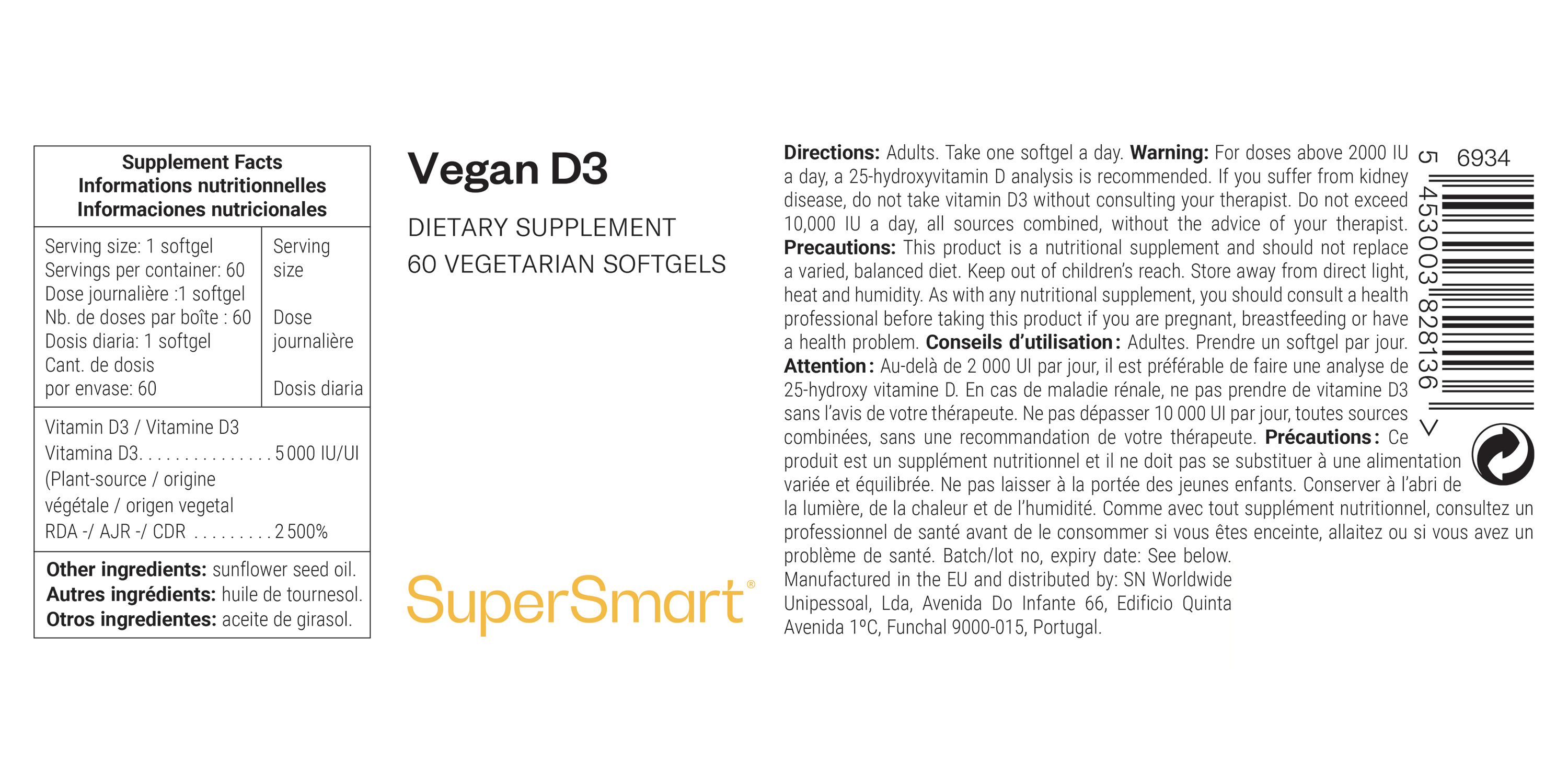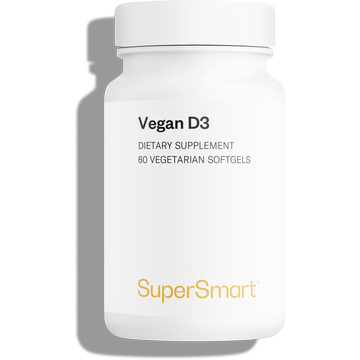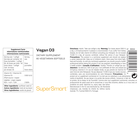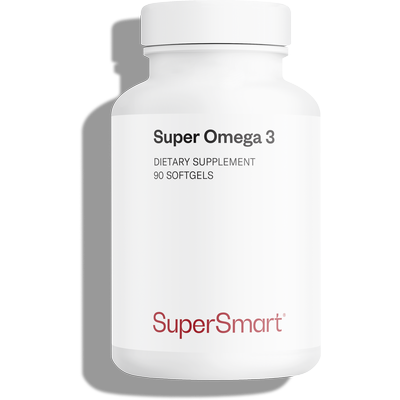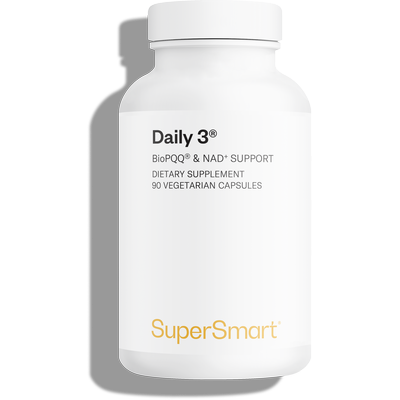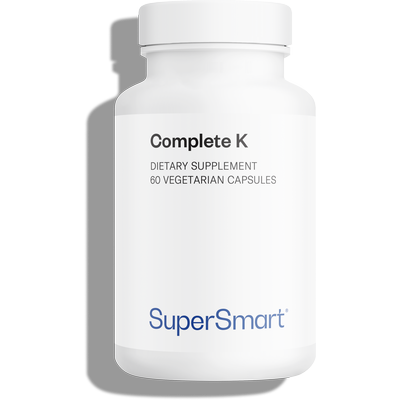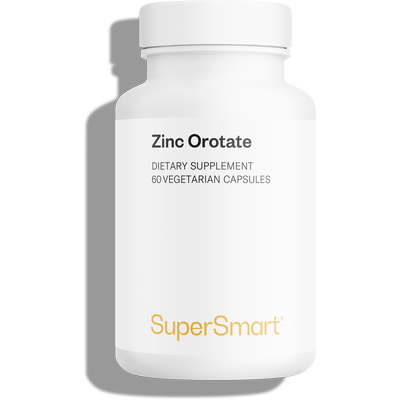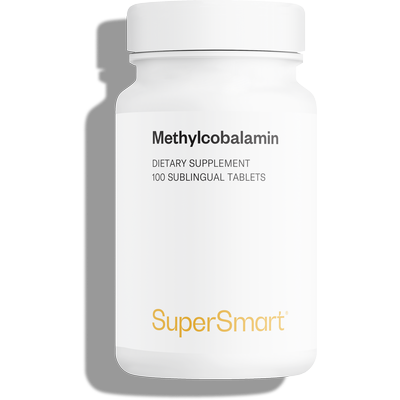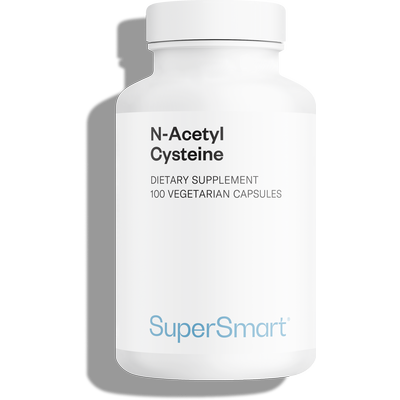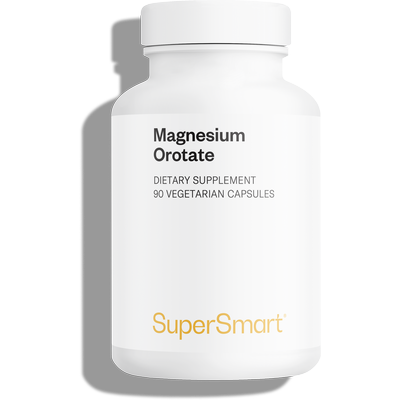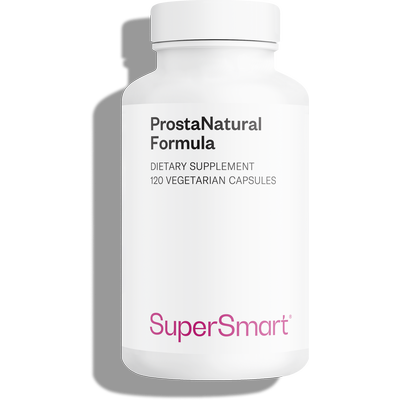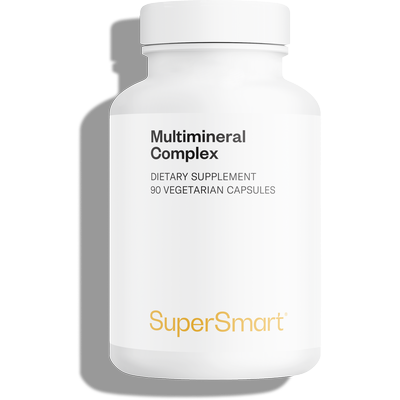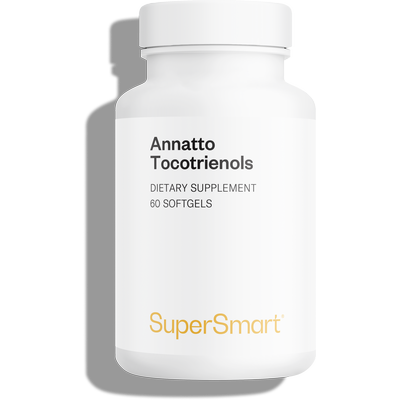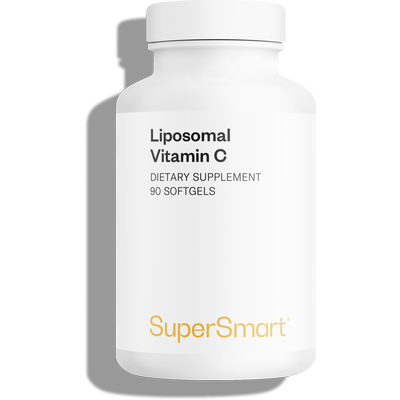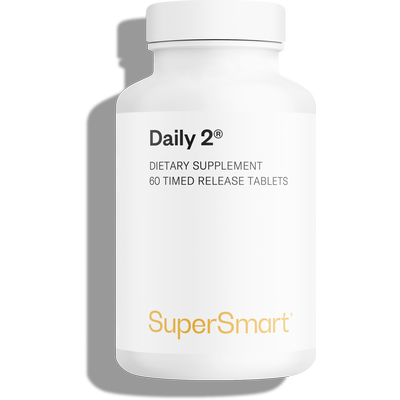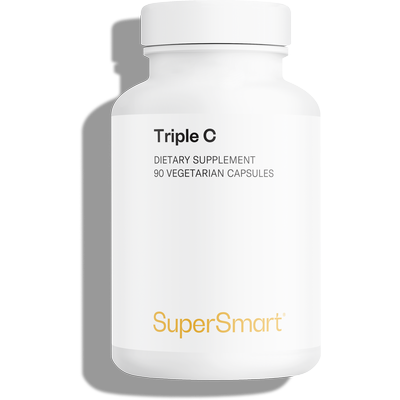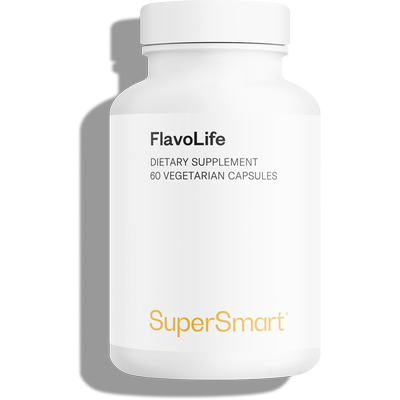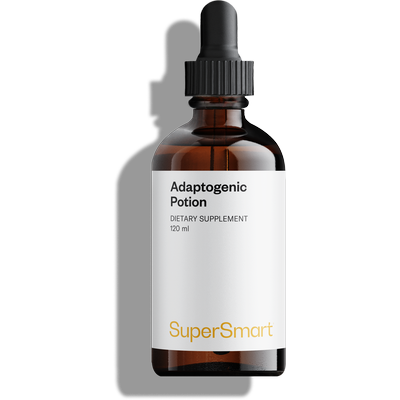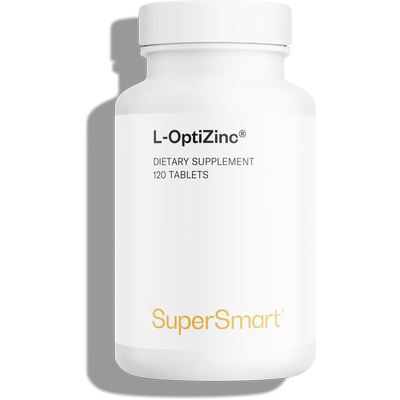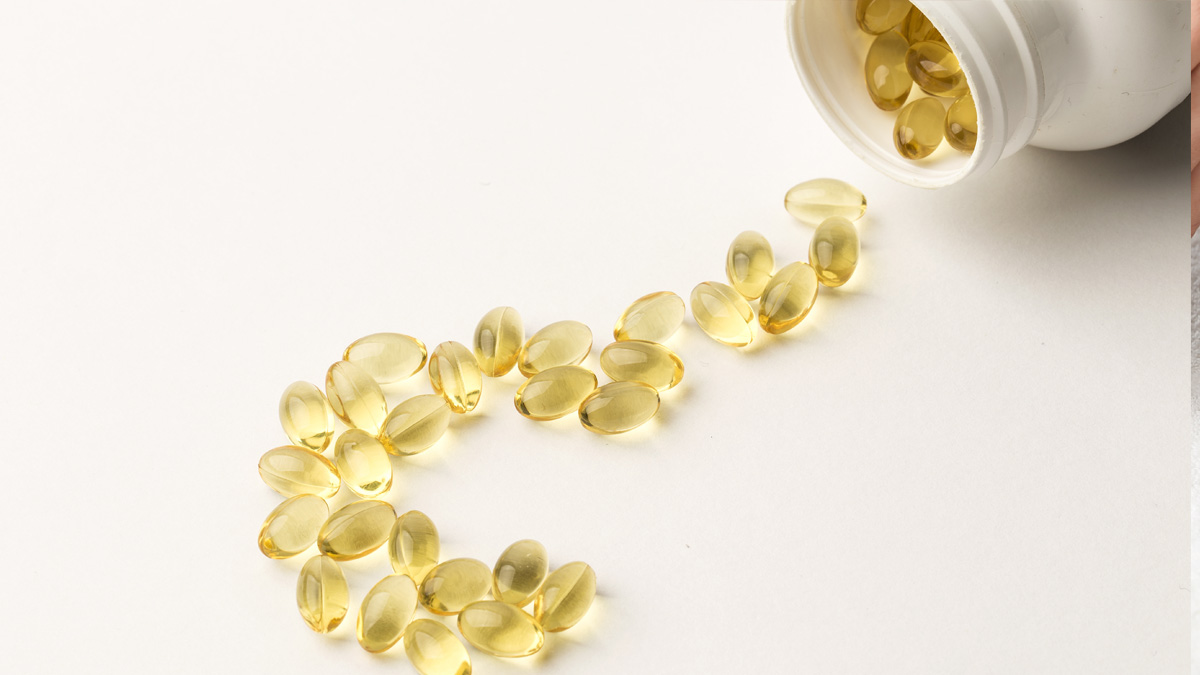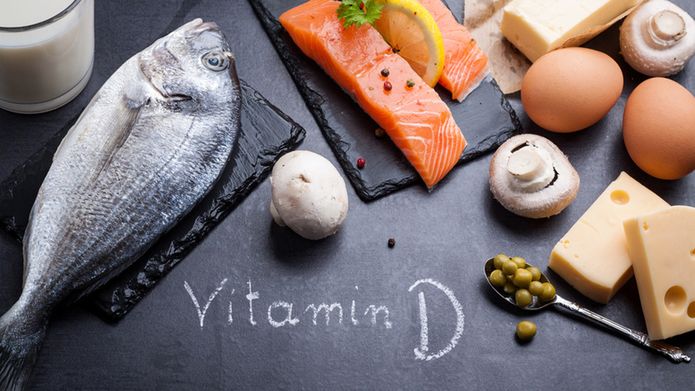Complete your selection
Vegan D3 is a dietary supplement containing plant-origin vitamin D3. It is sourced from non-GMO algae, which is completely pesticide-free.
As you know, vitamin D is essential for human health. It plays a part in immunity, the muscular system, bone health, blood calcium levels, cell division, etc. (1) D3 (also known as cholecalciferol), is known to be the most bioavailable form of vitamin D for the human body (2).
Vegan D3 also contains fatty acids from coconut oil, Since vitamin D is fat-soluble, the addition of fatty acids ensures that the vitamin is optimally absorbed into the bloodstream, for rapid, effective results (3).
A recent revolution: vegan vitamin D3
Vitamin D3 supplements are normally sourced from fish oil or lanolin, a type of wax present in sheep’s wool. Our other vitamin D supplements, for example, are all composed of lanolin. But science has recently shown that it’s possible to develop supplements from 100% vegan vitamin D3 obtained from algae(4).
The introduction of vegan supplements comes in response to growing awareness of animal sentience and environmental issues. Vegan D3 thus enables you to gain the benefits of vitamin D3 without causing suffering to fish, or encouraging over-fishing which threatens our oceans, or necessitating the rearing of sheep for wool, which contributes to global warming, etc. (5)
We should straightaway clarify that this vegan D3 has exactly the same chemical structure and efficacy as animal-source vitamin D3 (6).
What benefits are offered by the supplement Vegan D3?
Vitamin D, or calciferol, is a hormone with multiple benefits for health. The supplement Vegan D3 thus helps to:
- boost the immune system and prevent respiratory problems (7-9) ;
- support muscle function (10-11) ;
- strengthen the bones and teeth (12-13) ;
- regulate calcium levels in the blood (14) ;
- ensure good absorption/utilisation of calcium and phosphorus (15) ;
- reduce the risk of falls associated with postural instability and muscle weakness. Falling is a major risk factor for fractures in those aged 60 and over (16-17) ;
- support cell division(18-19).
Deficiency in vitamin D: a worrying and common problem
Despite the crucial importance of this vitamin, deficiency in vitamin D is surprisingly common. Indeed, it’s currently one of the most widespread and concerning deficiencies in the population.
A normal blood level for vitamin D is considered to be 30 ng/mL, but in many countries, the majority of the population have levels below the recommended threshold (20).
And that’s without taking into account the adverse effect of advancing age on vitamin D levels. In Europe, studies have shown that as many as 80% of older people have sub-optimal levels of vitamin D (21-22).
Yet the fact is that a lack of vitamin D is associated with many kinds of health problems: respiratory concerns, muscle weakness, osteoporosis, mental health issues, corruption of cells, etc. (23)
Why is vitamin D deficiency so widespread?
As you know, the body produces vitamin D when the skin is exposed to the sun, which is why it’s sometimes referred to as the ‘sunshine vitamin’. The problem is that for the majority of us, sunshine does not provide enough.
To start with, the benefit we get from the sun in winter, or when it’s cloudy, is negligible. But even in summer, our modern way of life means we tend to spend more time indoors (working in an office or workshop, doing domestic chores, certain routines ...) and we don’t synthesise as much vitamin D as our bodies need (24-25).
And older people’s skin produces even less of the vitamin (26).
What is in Vegan Vitamin D3
Any questions?
Fortunately, the diet can provide us with additional vitamin D provided, that is, that you eat well-balanced meals. So try to regularly eat the following vitamin D-containing foods:
- omnivores can focus on fish and seafood (salmon, mackerel, eels ...) ;
- but there are also vegan sources of vitamin D, such as mushrooms and sea lettuce ;
- an easy way of significantly boosting your intake is to take a vitamin D supplement, such as Vegan D3. Many scientific studies recommend supplementation with vitamin D for the general population, in order to compensate for the widespread and significant deficiencies (27-29).
- Vegan D3, as its name indicates, contains vitamin D3 or cholecalciferol. This form of vitamin D is 87% more active, bioavailable and beneficial than D2 (ergocalciferol) (30). Indeed, it's vitamin D3 which we synthesise when we expose our skin to the sun, and which we obtain from animal products – as well as being the form in this particular algae.
- Vegan D3 offers a particularly powerful dosage of 5000IU per capsule. The efficacy of oral supplementation at this dose has been confirmed by several studies (31-33).
- Our vitamin D3 is suspended in a medium of MCT (medium-chain triglycerides) coconut oil to maximise the vitamin’s uptake by the body (34).
- It also contains 0.2% natural d-alpha tocopherol from sunflower oil. This form of vitamin E helps to protect cells against oxidative stress(35).
- This supplement is produced using a completely traceable and sustainable process, combined with constant quality and purity control.
- Vegan D3 is of course 100% vegan: the vitamin D3 sourced from algae is combined with coconut triglycerides, as well as d-alpha tocopherol from sunflower oil. The capsule shell consists of plant-source gelatine made from tapioca starch.
Are you wondering which supplements to take alongside vegan vitamin D3?
Our first recommendation is magnesium. This key trace-element helps to reduce fatigue, and boost the muscular and nervous systems. (36) The best choice is OptiMag, which consists of 8 forms of magnesium offering unrivalled bioavailability and solubility.
In addition, it’s a good idea to combine the ‘sunshine vitamin’ with another important compound, vitamin K. Less well-known, vitamin K helps to strengthen the bones, and ensure good blood coagulation (37). The supplement Complete K offers the 3 most active forms: phytonadione (K1), menaquinone 4 (K2) and menaquinone 7 (another form of K2).
This product’s softgels are 100% vegan. Made solely from plant-based ingredients, they are notable for their purity, bioavailability and consistency with an animal-friendly and green lifestyle.
october 6 2024
excellent produit supersmart
october 7 2024
comme.d.habitude.très.bon.produit.d.ailleur.je.suis.client.ca.fait.bientot.20.ans
As usual, very good product. By the way, I have been a customer for almost 20 years.
 see the translation
Translated by SuperSmart - see the original
see the translation
Translated by SuperSmart - see the original
april 6 2024
chaque matin une gélule depuis de nombreuses années
every morning a capsule for many years
 see the translation
Translated by SuperSmart - see the original
see the translation
Translated by SuperSmart - see the original
february 19 2024
Voir l’autre avis precedent
See the previous review
 see the translation
Translated by SuperSmart - see the original
see the translation
Translated by SuperSmart - see the original
january 23 2024
La vitamine D3 est incontournable un des éléments pour maintenir une bonne immunite et lutter contre les virus
Vitamin D3 is an essential element for maintaining good immunity and fighting against viruses.
 see the translation
Translated by SuperSmart - see the original
see the translation
Translated by SuperSmart - see the original
Need help?
You may also like

